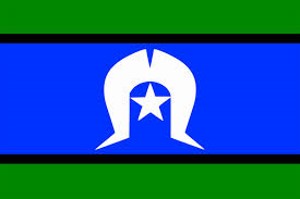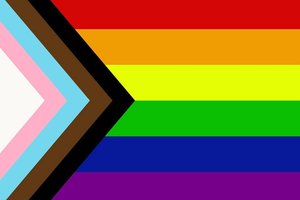‘Go home and kick into your beanbag, flail your arms around into cushions’.
That’s a simple enough instruction, isn’t it?
For you there, coming in on the tail end of this 15-year long conversation, it might sound a weird prescription for healing. I, however, have come to respect the deep-seated and often hidden connections between body, mind and emotions, since long-buried effects of early childhood abuse began to surface in my mid-life. Even the sceptical, rational part of me that once studied medicine, then switched to Sociology, is now convinced of the myriad ways in which the body holds on to, even buries, past trauma and unprocessed emotion. It can be embedded in the organs, in the muscles, connective tissue, bones and joints. And it almost always effects the way our hormones and neurotransmitters pulse and the connections made, and not made, in the brain and rest of the nervous system.
I digress. For now, as I sit warm and comfy in my home, a few hours after the appointment with the counsellor, the question is:
Why is this simple instruction so difficult to follow?
There’s no one else home, nor expected. The dog is sleeping elsewhere in the sun, not here in the beanbag. I am completely free of external commitments for the next few hours. I am comfortable on the spacious carpeted floor of this room where I have become accustomed to doing zoomed Yoga classes. It’s several years since our daughter, now mid-20s, moved out of this room, taking all but a drawer full of things and memories as she ventured interstate for study and work. We didn’t follow the advertisement cliché of turning this bedroom into an ensuite, so soft cushions and blankets are strewn around this light-filled space. I know I can relax into myself here. I have experienced being a blubbering bundle in this space, a radiant energy field amazed at what my body can stretch into, a frustrated frump, a willing writer, and an ethereal angel. I can flow into a multitude of states in this space.
The only human noises I can hear are the builders’ nail guns and hammers 3 houses away and the neighbour’s radio she keeps next to her while she gardens. The familiar trees – huge sentinel gums in the distance and, closer in, masses of leafy greens – my soothing friends beyond the windowpanes, flutter in the gentle autumn breeze. I am well practised at letting these rhythms and touches of light settle me in preparedness for meditation or relaxation. I have been doing yoga for 34 years, teaching it for 31. It has been an amazing, often rocky, journey back into my body (I had always felt awkward and uncoordinated but never knew I had lost connection with my body); harnessing my mind (I used to think it worked well … didn’t realise it was often side-tracking me); and bringing clarity to the emotional fog (I never knew it was clouding and confounding my experience of daily life). I’ve gone from a sensible, reliable, defined, competent person that some would have seen as a bit stuck, wooden or two dimensional to a more flowing, rounded, sometimes strong, sometimes vulnerable human being.
Thanks to this challenging but liberating journey towards my whole self through Yoga and trauma-healing, I have come to know my body quite well. Earlier today, in the counsellor’s room I was exploring one of my recurring flashes of memory (I call them ‘flashbacks’ or ‘floaties’). I didn’t have any difficulty noticing the solid, hard, cylinder of tightness in my core, in front of my spine. Letting my breath flow as I was guided through various familiar releasing practices, I gradually sensed this tightness reducing to a cord or strip. But it didn’t completely disappear. This cord or rod of tightness persisted.
I was 2-3 years old when the sexual abuse started, at the hands of an authority figure in my extended family. Today, the counsellor and I know that accessing and working with body memory will bring more effective healing than trying to find words. At 2, 3, 4 years old, I didn’t have the vocabulary, cognitive frameworks, or life experience to help me understand, think about, or speak of what was being forced on me. Memories of these overwhelming and confusing experiences couldn’t be stored in any existing context in my budding memory bank.
That’s why flashes of memory fragments that were strangely charged used to pop in randomly, as I went about my ordinary everyday life. This is also why it is only now, 60 odd years later as I explore these seared-in memory flashes, that I come face-to-face, for the first time, with the pulsating terror that can have no name and is the force behind these ‘intrusive memories’.
Trying to think or talk about this pulsating force will quickly confound and overwhelm me into wooden silence. I know not to even try.
What can work is staying with the bodily sensations. What do I want to do with this cold cord of stainless steel in me? It’s not difficult to find words for the intense physical revulsion I am feeling. I want to push it out, push it away, flail my arms around and wipe out everything that it came with. I can’t name ‘it’ though, or form thoughts around any of ‘it’. This morning in the counsellor’s room, which feels such a protected bubble away from my responsible adult world, I kicked my feet, threw my arms around and felt the wonderful power of using my whole body to push away the source of this revulsion. Then, and again now, as I write about it, I feel flashes of pain, discomfort, and unnameable sensations in the soft parts of my body. I feel hints of gagging nausea and the tightness in my throat. It’s like a trapped, squashed, yet solid lump of a scream. I also feel a flicker of pain in my left shoulder. But wow, doesn’t it feel good to have thrown my arms, legs and feet around and to have experienced the healing freedom of letting my body move and push against this terrifying pulsating force!
It worked so well this morning in the counsellor’s space, why does it feel so impossible now, in the safe privacy of my home yoga room?
I am sad to admit, even in my home that I love and co-habit with my partner who doesn’t frighten me, I don’t feel fully safe. I can’t be 100 % sure it’s private:
“What if someone walks in? What if the lady gardening next door happens, for the first time ever, to find something to stand on and look over the fence and into this window? I need to hide this terrible stuff”.
These are deep, shame-filled fears that have been with me for over 60 years. They come from the conditioning of how nice girls should behave, but also from the layers of silencing and pretence that formed the foundations of the extended family I grew up in. The very basis of who I am (or, rather, was) is like a house with metaphorical stumps set in the quagmire of transgenerational trauma – tilted, wobbly floors that concealed subterranean darkness; doors that were barred or set to open only one way (letting in the horrific but not releasing it); signals and emotions banished, ignored or misconstrued (“Don’t ruin everything now by crying”); walls, cracks hidden by wallpaper, that corralled us into narrow, prescribed ways of presenting ourselves to the world.
No wonder I don’t feel safe to be my whole, true self at home. One of the fundamental lessons I learnt at 2 was ‘home does not equal safe’. I chide myself:
“Be in this moment, this is your home, you have consciously created it and feel comfortable in it, especially this room. You have 15 years’ experience of dealing with this trauma as chunks of it surface. You have come so far in making yourself whole and authentic. Surely you can let yourself kick the empty bean bag and thump a couple of cushions.”
My toddler self does as she is told. She goes through the motions of kicking and thumping. But, even with a strong sense of full permission, it feels hollow.
Perhaps it is something that needs to be practiced.
Yes, that is partly it. This terror has been locked away in such tight spots for so long, it’s understandable that it will take practice to let myself embody and express it. I undertake to kick the beanbag and thump the cushions on a regular basis.
There’s something else niggling my peripheral consciousness.
Do I actually need the counsellor here with me to help me get in touch with the emotions? Again, the chiding voice:
“Come on, you see yourself as transformed, as a wise elder. You’ve grown so much in these last 15 years … do you still need outside help? Really! You know the processes that can bring you in touch with deep feelings and you know how to sit with them and trust that the releases and resolutions will flow naturally. You know the healing is always closer than you think”.
Yet, from within the toddler state, there’s a strong sense of needing something. Oh yes, this is close to the heart of it. It’s the same sense of lack I can feel because I have made myself ‘the strong one’ in all of my relationships. I often feel I don’t have anyone I can lean into. I can’t allow myself to be comfortably enveloped or protected by other people. There’s an echo here, in an empty space within my foundations – I had parents who loved me but because of the trauma they held within, they didn’t have the emotional maturity and inner power to guide my unfoldment and fully protect me in my early years. (Note to self, read the book your brother gave you on being a child of emotionally immature parents).
This echo is telling me I deeply need to do this healing work ‘in relationship’. It is something I need to practice with the counsellor.
OK, I give myself permission to keep seeing, to keep needing the counsellor for the time being.
For now, in my own space, perhaps it is enough to feel enthusiastic and inspired by simply the idea of seeking an adult tantrum. A healing tantrum for the limp, insipid toddler who couldn’t even come close to throwing one because she was so tightly controlled. For so long she was constrained by shaky foundations, unreliable tilted floors, ever-threatening oozing darkness, misguided guidance and systems of pretence.
Be patient with her.
This little being holds so much hope, vitality and promise. She IS learning, step by step, to expand into the freedom, colour, exhilaration, power, spaciousness and grounded physicality that is her birth-right on the roller-coaster of life’s emotions.
About the author:
‘Gay’ has worked for over 40 years in different roles with families, children, teenagers and older people. She has a university degree, is a trained human service professional and currently works with a range of people through alternative wellbeing and trauma-informed, mental health networks. When the effects and memories of early childhood abuse surfaced in her late 40’s Gay thought she was ‘losing it’. She stumbled into a counsellor who understood trauma and she used Yoga practices to stabilise herself as she explored what was happening within. Fifteen years later she feels more alive, wise and liberated than ever but knows the value of being open to even deeper rounds of healing.










